Half as Much Again

Lesson Narrative
In this lesson students see how to use the distributive property to write a compact expression for situations where one quantity is described in relation to another quantity in language such as "half as much again" and "one third more than." If \(y\) is half as much again as \(x\) , then \(y = x + \frac12 x\) . Using the distributive property, this can be written as \(y = (1 \frac12)x\) . Students apply this sort of reasoning to various situations. A warm-up activity activates their prior knowledge of using the distributive property to write equivalent expressions. When students look for opportunities to use the distributive property to write equations in a simpler way, they are engaging in MP7.
In the next lesson they will consider similar situations involving fractions expressed as decimals. These two lessons prepare them for later study of situations involving percent increase and percent decrease.
Learning Goals
Teacher Facing
- Apply the distributive property to generate algebraic expressions that represent a situation involving adding or subtracting a fraction of the initial value, and explain (orally) the reasoning.
- Coordinate tables, equations, tape diagrams, and verbal descriptions that represent a relationship involving adding or subtracting a fraction of the initial value.
- Generalize a process for finding the value that is “half as much again,” and justify (orally and in writing) why this can be abstracted as $\frac32 x$ or equivalent.
Student Facing
Let’s use fractions to describe increases and decreases.
Required Preparation
Print and cut up slips from the Representations of Proportional Relationships Card Sort blackline master. Prepare 1 copy for every 2 students. These can be re-used if you have more than one class. Consider making a few extra copies that are not cut up to serve as an answer key.
Learning Targets
- I can use the distributive property to rewrite an expression like $x+\frac12 x$ as $(1+\frac12)x$.
- I understand that “half as much again” and “multiply by $\frac32$” mean the same thing.
CCSS Standards
Building On
Building Towards
Glossary Entries
A tape diagram is a group of rectangles put together to represent a relationship between quantities.
For example, this tape diagram shows a ratio of 30 gallons of yellow paint to 50 gallons of blue paint.

If each rectangle were labeled 5, instead of 10, then the same picture could represent the equivalent ratio of 15 gallons of yellow paint to 25 gallons of blue paint.
Print Formatted Materials
For access, consult one of our IM Certified Partners .
Additional Resources
| Google Slides | For access, consult one of our . | |
| PowerPoint Slides | For access, consult one of our . |

- For Parents
- For Teachers
- Teaching Topics

- Kindergarten
- EM3/CCSS at Home
- Family Letters
- Student Gallery
- Understanding EM
- Algorithms/ Computation
- Student Links
EM4 at Home
Multidigit multiplication.
Lesson | Vocabulary | Home Link Help | Games |
|---|---|---|---|
| Extended Multiplication Facts |
| Home Link 4-1
| |
| Making Reasonable Estimates for Products | Home Link 4-2
| ||
| Partitioning Rectangles |
| Home Link 4-3
| |
| Converting Liquid Measures |
| Home Link 4-4
| |
| Walking Away with a Million Dollars | Home Link 4-5
| ||
| Introducing Partial-Products Multiplication |
| Home Link 4-6
| |
| Metric Units of Mass |
| Home Link 4-7
| |
| Money Number Stories | Home Link 4-8
| ||
| Partial-Products Multiplication | Home Link 4-9
| ||
| Multiplication Wrestling |
| Home Link 4-10
| |
| Area Models for Rectangles and Rectilinear Figures |
| Home Link 4-11
| |
| Multistep Multiplication Number Stories | Home Link 4-12
| | |
| Lattice Multiplication |
| Home Link 4-13
| |
| Unit 4 Progress Check | Home Link 4-14 |

Everyday Mathematics for Parents: What You Need to Know to Help Your Child Succeed
The University of Chicago School Mathematics Project
University of Chicago Press
Learn more >>

Related Links
Help with algorithms.
Access video tutorials, practice exercises, and information on the research basis and development of various algorithms.
Everyday Mathematics Online
With a login provided by your child's teacher, access resources to help your child with homework or brush up on your math skills.
Parent Connections on Publisher's site
McGraw-Hill Education offers many resources for parents, including tips, activities, and helpful links.
Parent Resources on EverydayMath.com
EverydayMath.com features activity ideas, literature lists, and family resources for the EM curriculum.
Understanding Everyday Mathematics for Parents
Learn more about the EM curriculum and how to assist your child.

Mindset 1 - Unit 4 - Lesson 7 - Homework
KHANH CHI NGUYEN
Loading ad...
- Google Classroom
- Microsoft Teams
- Download PDF

- Texas Go Math
- Big Ideas Math
- Engageny Math
- McGraw Hill My Math
- enVision Math
- 180 Days of Math
- Math in Focus Answer Key
- Math Expressions Answer Key
- Privacy Policy
Into Math Grade 7 Module 4 Lesson 4 Answer Key Apply Properties to Multi-step Addition and Subtraction Problems
We included H MH Into Math Grade 7 Answer Key PDF Module 4 Lesson 4 Apply Properties to Multi-step Addition and Subtraction Problems to make students experts in learning maths.
HMH Into Math Grade 7 Module 4 Lesson 4 Answer Key Apply Properties to Multi-step Addition and Subtraction Problems
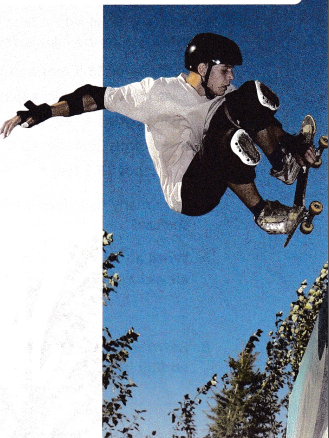
Step It Out
1. Andy usually skates for about 6 hours per week. On Monday, he spent 1\(\frac{1}{5}\) hours skating; on Wednesday, he spent 2\(\frac{3}{5}\) hours skating; and on Thursday, he spent 1\(\frac{5}{6}\) hours skating. Andy wrote the following expression to find the number of hours he spent skating. He grouped Wednesday and Thursday together at first because those were his best days, without thinking too much about what would be easiest to add. 1\(\frac{1}{5}\) + (2\(\frac{3}{5}\) + 1\(\frac{5}{6}\))
A. Rewrite the expression to make it simpler to add. (____ + 2\(\frac{3}{5}\)) + ____ Answer: (1\(\frac{1}{5}\) + 2\(\frac{3}{5}\)) + 1\(\frac{5}{6}\) B. What property ¡s demonstrated by rewriting the expression? _____________________ Answer: The property used to rewrite the expression is the associative property of addition. C. Regrouping makes the problem simpler because it associates two numbers with _____________________ Answer: Regrouping makes the problem simpler because it associates two numbers with brackets.
D. To add the numbers in parentheses, Add the whole numbers: 1 + ___ = ___ Add the like fractions: \(\frac{1}{5}\) + ___ = ____ Combine the results: _____ Answer: Add the whole numbers: 1 + 2 = 3 Add the like fractions: \(\frac{1}{5}\) + \(\frac{3}{5}\) = \(\frac{4}{5}\) Combine the results: 3 + \(\frac{4}{5}\) = 3 \(\frac{4}{5}\)

Turn and Talk Is there another way to solve this problem? Explain.
2. Rochelle dives into a lake from the water’s surface. Her change in elevation in the lake is described. She:
- descends 15.5 feet and takes some pictures of fish;
- ascends 8\(\frac{1}{5}\) feet to explore another area;
- descends 1.6 feet to capture video while following a fish;
- descends 20.4 feet to find some feeding bass; and finally,
- ascends 15.5 feet to take more pictures.
How many feet does Rochelle have left to ascend before reaching the surface?
A. Write an addition expression to represent Rochelle’s change in elevation from the water’s surface. _________________________ Answer: 8\(\frac{1}{5}\) + 15.5 B. Rewrite the expression to make it simpler to find the sum by first adding opposites. _________________________ Answer: 8\(\frac{1}{5}\) + 15.5 C. What properties of operations did you use to rewrite your expression in Part B? _________________________ _________________________ D. Add the opposites in your expression in Part B, and write the resulting expression. _________________________
E. Evaluate your expression in Part D to determine Rochelle’s elevation relative to the water’s surface. Identify the property used in the second line. 8\(\frac{1}{5}\) + ____ + ____ = 8\(\frac{1}{5}\) + ____ ______ = 8.2 + ____ = _____ Rochelle is ___ feet below the water’s surface. Answer: 8\(\frac{1}{5}\) + 15.5 + 37.5 = 8\(\frac{1}{5}\) + 15.5 + 37.5 = 8.2 + 15.5 + 37.5 = 61.2 Rochelle is 61.2 feet below the water’s surface.
Turn and Talk How are the properties of addition used to evaluate the expression in Task 2?

D. Is your answer reasonable? Explain. _________________________ _________________________ _________________________ _________________________
Turn and Talk If Abe’s elevation was —23.5 meters iñstead of +23.5 meters, what would Terry and Abe’s elevation difference be then? Explain. Answer: -23.5 + 19.75 = -3.75
Check Understanding
Question 1. Soojin is adding some lengths of wood she used for a project. The lengths of wood are 1\(\frac{2}{3}\), 3\(\frac{3}{4}\), and 2\(\frac{1}{4}\) feet. How much wood did she use in all? Answer: Given, Soojin is adding some lengths of wood she used for a project. The lengths of wood are 1\(\frac{2}{3}\), 3\(\frac{3}{4}\), and 2\(\frac{1}{4}\) feet. 2\(\frac{1}{4}\) + (1\(\frac{2}{3}\) + 3\(\frac{3}{4}\)) 2\(\frac{1}{4}\) + (1 + \(\frac{2}{3}\) + 3 + \(\frac{3}{4}\)) 2\(\frac{1}{4}\) + ( 4 + \(\frac{2}{3}\) + \(\frac{3}{4}\)) 2\(\frac{1}{4}\) + ( 4 + \(\frac{8}{12}\) + \(\frac{9}{12}\)) 2\(\frac{1}{4}\) + ( 4 + \(\frac{17}{12}\)) 2\(\frac{1}{4}\) + ( 4 + 1 \(\frac{5}{12}\)) 2\(\frac{1}{4}\) + 5 \(\frac{5}{12}\) 2 + \(\frac{1}{4}\) + 5 + \(\frac{5}{12}\) 2 + 5 = 7 \(\frac{1}{4}\) + \(\frac{5}{12}\) \(\frac{3}{12}\) + \(\frac{5}{12}\) = \(\frac{8}{12}\) = \(\frac{2}{3}\) 7 + \(\frac{2}{3}\) = 7\(\frac{2}{3}\)
Question 2. Alfonzo started with $50.00 in his checking account. He recorded these transactions in his checkbook: -$12.75, -$5.43, $75.00, -$2.57, and -$22.25. How can you use the Commutative and Associative Properties of Addition to find his balance using mental math? Answer: Given, Alfonzo started with $50.00 in his checking account. He recorded these transactions in his checkbook: -$12.75, -$5.43, $75.00, -$2.57, and -$22.25 50 – 12.75 – 5.43 + 75 – 2.57 – 22.25 50 + 75 – (12.75 + 22.25 + 5.43 +2.57) (commutative law) 50 + 75 – (12.75 +22.25) – (5.43 + 2.57) (associative law) 50 + 75 – 25 – 8 50 + 50 – 8 = 92
On Your Own
Question 3. Use Structure Dena cuts wood for a treehouse. She has five pieces of wood left over with the following lengths in centimeters: 12.7, 26\(\frac{3}{10}\), 15\(\frac{4}{5}\), 21\(\frac{1}{4}\), and 19.2. A. Write and evaluate an expression to find the total length of wood left over. _____________________ Answer: Total length = 12.7 + 26\(\frac{3}{10}\) + 15\(\frac{4}{5}\) + 21\(\frac{1}{4}\) + 19.2
B. Dena wants to make a birdhouse with the leftover wood. She needs 105\(\frac{3}{5}\) centimeters of wood for the birdhouse. Write and evaluate an expression to determine how much more wood will be needed. Answer: Total length = 12.7 + 26\(\frac{3}{10}\) + 15\(\frac{4}{5}\) + 21\(\frac{1}{4}\) + 19.2 = 12\(\frac{7}{10}\) + 26\(\frac{3}{10}\) + 15\(\frac{4}{5}\) + 21\(\frac{1}{4}\) + 19 \(\frac{4}{20}\) = (12\(\frac{7}{10}\) + 26\(\frac{3}{10}\)) + 15\(\frac{4}{5}\) + 21\(\frac{1}{4}\) + 19 \(\frac{4}{20}\) = 39 + 56\(\frac{5}{20}\) = 95 \(\frac{1}{4}\)
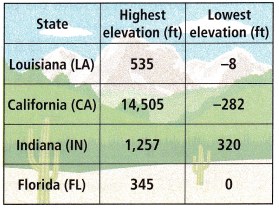
A. Write and evaluate an expression to find the difference in elevation in each state. ____________________________ ____________________________ ____________________________ ____________________________ Answer: Louisiana = 535 – (-8) = 535 + 8 = 543 California = 14,505 – (-282) = 14505 + 282 = 14787 Indiana = 1257 – 320 = 937 Florida = 345 – 0 = 345
B. Roger says the difference between the lowest elevation in California and the lowest elevation in Louisiana is -290 feet. Determine if his answer is reasonable. Explain. ___________________ Answer: -282 – (-8) -282 + 8 = -274 feet
Question 5. The high temperatures (in °F) for a 4-day holiday weekend were: -2.6, 16.7, -3.4, 6.1 Use properties of addition to help you find the sum. Then find the average high temperature over the four days. _________________________ _________________________ Answer: The high temperatures (in °F) for a 4-day holiday weekend were: -2.6, 16.7, -3.4, 6.1 -2.6 + 16.7 – 3.4 + 6.1 = 16.8 Average of 4 days: 16.8/4 = 4.2°F
For Problems 6—11. evaluate each expression.
Question 6. 2.6 + (-3.7 – (-1.5)) Answer: 2.6 + (-3.7 – (-1.5)) 2.6 – 3.7 + 1.5 2.6 + 1.5 – 3.7 = 0.4
Question 7. -15 – 2\(\frac{3}{4}\) – 1.7 – (-2\(\frac{2}{5}\)) ____________________________ Answer: -15 – 2\(\frac{3}{4}\) – 1.7 – (-2\(\frac{2}{5}\)) -15 – 2.75 – 1.7 – (-2.4) -15 – 2.75 – 1.7 + 2.4 = -17.05 Thus -15 – 2\(\frac{3}{4}\) – 1.7 – (-2\(\frac{2}{5}\)) = -17.05
Question 8. -1\(\frac{1}{5}\) + 2.9 – (-3\(\frac{3}{8}\)) Answer: -1\(\frac{1}{5}\) + 2.9 – (-3\(\frac{3}{8}\)) -1.2 + 2.9 + 3\(\frac{3}{8}\) -1.2 + 2.9 + 3.375 = 5.075 Thus, -1\(\frac{1}{5}\) + 2.9 – (-3\(\frac{3}{8}\)) = 5.075
Question 9. 2\(\frac{3}{4}\) + (-8.34) + (-7\(\frac{3}{10}\)) Answer: 2\(\frac{3}{4}\) + (-8.34) + (-7\(\frac{3}{10}\)) 2.75 – 8.34 – 7.3 = -12.89 Thus, 2\(\frac{3}{4}\) + (-8.34) + (-7\(\frac{3}{10}\)) = -12.89
Question 10. -11.5 + 15\(\frac{2}{5}\) – 10.1 Answer: -11.5 + 15\(\frac{2}{5}\) – 10.1 -11.5 + 15.4 – 10.1 = -6.2 -11.5 + 15\(\frac{2}{5}\) – 10.1 = -6.2
Question 11. 5\(\frac{1}{4}\) – (-3.55) + (-3\(\frac{2}{5}\)) Answer: 5\(\frac{1}{4}\) – (-3.55) + (-3\(\frac{2}{5}\)) 5.25 + 3.55 – 3.40 = 5.40
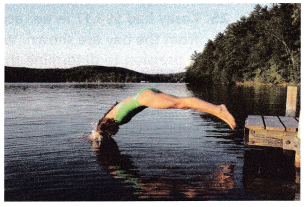
Question 13. Financial Literacy Chris wrote the following checks: $19.50, $25.75, $5.50, and $136.95. He began with $252.17 in his checking account. Write and evaluate an expression to determine his balance. Answer: Given, Chris wrote the following checks: $19.50, $25.75, $5.50, and $136.95. He began with $252.17 in his checking account. 252.17 – 136.95 – 5.5 – 19.5 – 25.75 115.22 – 5.5 – 19.5 – 25.75 109.72 – 19.5 – 25.75 90.22 – 25.75 64.47
Question 14. Reason Beylinn is driving on a road with an elevation of -245\(\frac{5}{8}\) meters. Jay is driving on a different road at an elevation of -56.45 meters. Write and evaluate an expression to determine who is traveling at a higher elevation. How much higher? Explain. _________________________ _________________________ Answer: Given, Berlin is driving on a road with an elevation of -245\(\frac{5}{8}\) meters. Jay is driving on a different road at an elevation of -56.45 meters. -245\(\frac{5}{8}\) – (-56.45) 245\(\frac{5}{8}\) can be written in the decimal as 245.625 -245.625 + 56.45 = -189.175 Height cannot be negative so, it is 189.75 meters taller.
Question 15. Dino is learning to scuba dive. First, he descended 27.75 feet. After ten minutes, he descended another 9.45 feet. Write and evaluate an expression to determine his elevation relative to sea level. Answer: Given, Dino is learning to scuba dive. First, he descended 27.75 feet. After ten minutes, he descended another 9.45 feet. 27.75 + 9.45 = 37.2 feet Dino elevation relative to sea level is 37.2 feet.
Question 16. Explain why you might want to use properties to change the order and grouping of the numbers in the following sum. -45.2 + (-7.9) + (-3.8) Answer: -45.2 + (-7.9) + (-3.8) -45.2 – 7.9 – 3.8 = -56.9
For Problems 17—24, evaluate each expression.
Question 17. -12\(\frac{2}{5}\) + 8\(\frac{9}{10}\) __________________ Answer: -12\(\frac{2}{5}\) + 8\(\frac{9}{10}\) -12 – \(\frac{2}{5}\) + 8 + \(\frac{9}{10}\) Solving the whole numbers -12 + 8 = -4 – \(\frac{2}{5}\) + \(\frac{9}{10}\) LCD of 5 and 10 is 10 – \(\frac{4}{10}\) + \(\frac{9}{10}\) = \(\frac{1}{2}\) -4 + \(\frac{1}{2}\) = -3\(\frac{1}{2}\)
Question 18. 45.16 – 72.5 + (-63.72) + 50 __________________ Answer: 45.16 – 72.5 + (-63.72) + 50 45.16 + 50 -(72.5 + 63.72) = -41.60
Question 19. -27 – 6.5 + (-1.3) + 28\(\frac{7}{10}\) Answer: -27 – 6.5 + (-1.3) + 28\(\frac{7}{10}\) Convert from mixed fraction to the decimal numbers. -27 – 6.5 + (-1.3) + 28.7 -27 – 6.5 – 1.3 + 28.7 = -6.1
Question 20. -18 + 3.4 + (-2.5) Answer: -18 + 3.4 + (-2.5) -18 – 2.5 + 3.4 = -17.1
Question 21. –\(\frac{5}{6}\) + 1\(\frac{1}{3}\) – 3.3 Answer: –\(\frac{5}{6}\) + 1\(\frac{1}{3}\) – 3.3 Convert from mixed fraction to the decimal numbers. -0.8 + 1.3 – 3.3 = -2.8 Thus, –\(\frac{5}{6}\) + 1\(\frac{1}{3}\) – 3.3 = -2.8
Question 22. –\(\frac{2}{5}\) – 4\(\frac{1}{10}\) + (-10.53) Answer: –\(\frac{2}{5}\) – 4\(\frac{1}{10}\) + (-10.53) Convert from mixed fraction to the decimal numbers. -0.4 – 4.1 + (-10.53) = -15.03 Thus –\(\frac{2}{5}\) – 4\(\frac{1}{10}\) + (-10.53) = -15.03
Question 23. -2\(\frac{3}{5}\) – 3\(\frac{1}{2}\) + 1\(\frac{7}{10}\) + (-3\(\frac{3}{10}\)) Answer: -2\(\frac{3}{5}\) – 3\(\frac{1}{2}\) + 1\(\frac{7}{10}\) + (-3\(\frac{3}{10}\)) -2\(\frac{3}{5}\) – 3\(\frac{1}{2}\) + 1\(\frac{7}{10}\) – 3\(\frac{3}{10}\) Convert from mixed fraction to the decimal numbers. 2\(\frac{3}{5}\) = \(\frac{13}{5}\) = 2.6 3\(\frac{1}{2}\) = \(\frac{7}{2}\) = 3.5 1\(\frac{7}{10}\) = \(\frac{17}{10}\) = 1.7 3\(\frac{3}{10}\) = \(\frac{33}{10}\) = 3.3 -2.6 – 3.5 + 1.7 – 3.3 = -7.7 -2\(\frac{3}{5}\) – 3\(\frac{1}{2}\) + 1\(\frac{7}{10}\) + (-3\(\frac{3}{10}\)) = -7.7 7.7 can be written as 7\(\frac{7}{10}\) -2\(\frac{3}{5}\) – 3\(\frac{1}{2}\) + 1\(\frac{7}{10}\) – 3\(\frac{3}{10}\) = -7\(\frac{7}{10}\)
Question 24. -15.35 + 83.5 + (-16.98) + 1.8 Answer: -15.35 + 83.5 + (-16.98) + 1.8 (-15.35) + 83.5 + (16.98) + 1.8 = 52.97
Question 25. Kasey had $98.17 in her account. Her receipts from the day are shown. Write and evaluate an expression to determine the balance in her account. Answer:
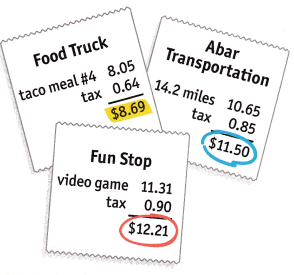
Question 26. Lupita rewrote an expression as follows. -5.5 + 10.63 + (-3.7) = -5.5 + (-3.7) + 10.63 Did she use the Commutative or the Associative Property? What is the sum? Answer: -5.5 + 10.63 + (-3.7) = -5.5 + (-3.7) + 10.63 No she did not use any property. -5.5 + (-3.7) + 10.63 = 1.43
Question 27. Construct Arguments Terrance adds the lengths of fabric that he has left from a project. The lengths of fabric, in inches, are 15\(\frac{1}{6}\), 11\(\frac{1}{3}\), and 17\(\frac{1}{2}\). Terrance began with 100 inches. Write and evaluate an expression to determine how much fabric he used in all. How did you solve this problem? Answer: Terrance adds the lengths of fabric that he has left from a project. The lengths of fabric, in inches, are 15\(\frac{1}{6}\), 11\(\frac{1}{3}\), and 17\(\frac{1}{2}\). 15\(\frac{1}{6}\) + 11\(\frac{1}{3}\) + 17\(\frac{1}{2}\) 15\(\frac{1}{6}\) + (11\(\frac{1}{3}\) + 17\(\frac{1}{2}\)) 15\(\frac{1}{6}\) + (11 + \(\frac{1}{3}\) + 17 + \(\frac{1}{2}\)) 15\(\frac{1}{6}\) + (11 + 17 + \(\frac{1}{3}\) + \(\frac{1}{2}\)) 15\(\frac{1}{6}\) + (28 + \(\frac{1}{3}\) + \(\frac{1}{2}\)) 15\(\frac{1}{6}\) + (28 + \(\frac{5}{6}\)) 15\(\frac{1}{6}\) + (28 \(\frac{5}{6}\)) 15\(\frac{1}{6}\) + 28 \(\frac{5}{6}\) 15 + \(\frac{1}{6}\) + 28 + \(\frac{5}{6}\) 15 + 28 + \(\frac{1}{6}\) + \(\frac{5}{6}\) 15 + 28 + \(\frac{6}{6}\) 15 + 28 + 1 = 44 Terrance began with 100 inches. 100 – 44 = 56 inches
Question 28. Overnight, the temperature increased by 3\(\frac{1}{2}\) °F. The temperature began at —7.9 °F. Write and evaluate an expression to determine the current temperature. Answer: Given, Overnight, the temperature increased by 3\(\frac{1}{2}\) °F. The temperature began at —7.9 °F. 3\(\frac{1}{2}\) – 7.9 3.5 – 7.9 = -4.4 °F.
For Problems 29-36, evaluate each expression.
Question 29. (-5.8 + 9.1) – (-2\(\frac{1}{4}\)) Answer: (-5.8 + 9.1) – (-2\(\frac{1}{4}\)) 3.3 – (-2\(\frac{1}{4}\)) 3.3 + 2\(\frac{1}{4}\) Now convert the mixed fraction to decimal numbers. 2\(\frac{1}{4}\) = 2.25 3.3 + 2.25 = 5.55 Thus, (-5.8 + 9.1) – (-2\(\frac{1}{4}\)) = 5.55
Question 30. (15\(\frac{1}{2}\) + 2.6) – 18\(\frac{3}{5}\) Answer: (15\(\frac{1}{2}\) + 2.6) – 18\(\frac{3}{5}\) Now convert the mixed fraction to decimal numbers. 15\(\frac{1}{2}\) = 15.5 18\(\frac{3}{5}\) = \(\frac{93}{5}\) = 18.6 (15.5 + 2.6) – 18.6 = 18.1 – 18.6 = -0.5
Question 31. 10.2 – (-2.14 – 4.9) Answer: 10.2 – (-2.14 – 4.9) 10.2 – (-(2.14 + 4.9)) 10.2 – (-7.04) 10.2 + 7.04 = 17.24
Question 32. -13\(\frac{3}{4}\) + 5\(\frac{1}{3}\) Answer: -13\(\frac{3}{4}\) + 5\(\frac{1}{3}\) Rewriting the expression by separating the parts -13 – \(\frac{3}{4}\) + 5 + \(\frac{1}{3}\) Solving the whole number parts -13 + 5 = -8 Solving the fraction parts – \(\frac{3}{4}\) + \(\frac{1}{3}\) LCD of 3 and 4 is 12 – \(\frac{9}{12}\) + \(\frac{4}{12}\) = –\(\frac{5}{12}\) Now combine the whole and fraction parts -8 – \(\frac{5}{12}\) = -8\(\frac{5}{12}\)
Question 33. -5.5 – (12.36 – 8.3) Answer: -5.5 – (12.36 – 8.3) -5.5 – (4.06) -5.5 – 4.06 = -9.56
Question 34. (-4.25 – 8.7) + (-1\(\frac{1}{2}\)) – 2.5 Answer: (-4.25 – 8.7) + (-1\(\frac{1}{2}\)) – 2.5 -12.95 – 1\(\frac{1}{2}\) – 2.5 Now convert the mixed fraction to decimal numbers. -12.95 – 1.5 – 2.5 -(12.95 + 1.5 + 2.5) = -16.95 (-4.25 – 8.7) + (-1\(\frac{1}{2}\)) – 2.5 = -16.95
Question 35. 1\(\frac{9}{10}\) + (-4\(\frac{3}{4}\)) + (-7.93) Answer: 1\(\frac{9}{10}\) + (-4\(\frac{3}{4}\)) + (-7.93) Simplify the signs + × – = – 1\(\frac{9}{10}\) – 4\(\frac{3}{4}\) – 7.93 Now convert the mixed fraction to decimal numbers. 1\(\frac{9}{10}\) = \(\frac{19}{10}\) = 1.9 4\(\frac{3}{4}\) = \(\frac{19}{4}\) = 4.75 1.9 – 4.75 – 7.93 = -10.78 1\(\frac{9}{10}\) + (-4\(\frac{3}{4}\)) + (-7.93) = -10.78
Question 36. -5\(\frac{2}{5}\) – 3.16 – (-1\(\frac{1}{8}\)) Answer: -5\(\frac{2}{5}\) – 3.16 – (-1\(\frac{1}{8}\)) Simplify the signs -5\(\frac{2}{5}\) – 3.16 + 1\(\frac{1}{8}\) Now convert the mixed fraction to decimal numbers. 1\(\frac{1}{8}\) = \(\frac{9}{8}\) = 1.125 5\(\frac{2}{5}\) = \(\frac{27}{5}\) = 5.4 Now simplify the expressions -5.4 – 3.16 + 1.125 = -7.435 Thus -5\(\frac{2}{5}\) – 3.16 – (-1\(\frac{1}{8}\)) = -7.435
Question 37. Open Ended Write a word problem that includes using properties to add or subtract positive and negative numbers. Answer: At 4 pm the temperature in Australia was 28° C. By 2 am it had dropped by 16° C, but by 10 am the following morning it had risen by 11° C. What was the temperature in Australia now?
Lesson 4.4 More Practice/Homework
Apply Properties to Multi-step Addition and Subtraction Problems
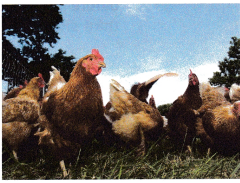
Question 2. At dinner time, the temperature outside was -13.9 °F. The temperature decreased by 12.8 °F overnight. Write and evaluate an expression to determine the temperature in the morning. Answer: Given, At dinner time, the temperature outside was -13.9 °F. The temperature decreased by 12.8 °F overnight. Outside temperature = -13.9°F outside Change in temperature = 13.9°F + 12.8 °F = 26.7 °F
Question 3. Evaluate the expression. Identify the property used in each step. \(\frac{3}{4}\) + (-\(\frac{3}{8}\)) + (-\(\frac{1}{4}\)) = –\(\frac{3}{8}\) + \(\frac{3}{4}\) + (-\(\frac{1}{4}\)) _______ = –\(\frac{3}{8}\) + [\(\frac{3}{4}\) + (-\(\frac{1}{4}\))] ________ = ____ Answer: The property that is used in this expression is commutative property. \(\frac{3}{4}\) + (-\(\frac{3}{8}\)) + (-\(\frac{1}{4}\)) = –\(\frac{3}{8}\) + \(\frac{3}{4}\) + (-\(\frac{1}{4}\)) = –\(\frac{3}{8}\) + [\(\frac{3}{4}\) + (-\(\frac{1}{4}\))] = –\(\frac{3}{8}\) + [\(\frac{3}{4}\) –\(\frac{1}{4}\)] = –\(\frac{3}{8}\) + \(\frac{1}{2}\) LCD is 8 and 2 is 8. = –\(\frac{3}{8}\) + \(\frac{4}{8}\) = \(\frac{1}{8}\)
Question 4. Open Ended Write a real-world problem that can be modeled by the equation 47\(\frac{1}{2}\) + (-47\(\frac{1}{2}\)) = o. __________________ Answer: 47\(\frac{1}{2}\) + (-47\(\frac{1}{2}\)) = 0 + × – = – 47\(\frac{1}{2}\) – 47\(\frac{1}{2}\) = 0
For Problems 5—14. evaluate each expression.
Question 5. —12\(\frac{1}{2}\) – (-4.8) Answer: —12\(\frac{1}{2}\) – (-4.8) —12\(\frac{1}{2}\) + 4.8 Convert from mixed fraction to the decimal form -12.5 + 4.8 = -7.7 —12\(\frac{1}{2}\) – (-4.8) = -7.7
Question 6. –\(\frac{9}{10}\) + (-18.6) Answer: –\(\frac{9}{10}\) + (-18.6) -0.9 – 18.6 -(0.9 + 18.6) -19.5 –\(\frac{9}{10}\) + (-18.6) = -19.5
Question 7. 89.2 + (-104.25) + (-17.9) Answer: 89.2 + (-104.25) + (-17.9) 89.2 – 104.25 – 17.9 89.2 – (104.25 + 17.9) 89.2 – 112.15 = -22.95 89.2 + (-104.25) + (-17.9) = -22.95
Question 8. 9\(\frac{9}{10}\) + 9\(\frac{1}{8}\) – 12.85 Answer: 9\(\frac{9}{10}\) + 9\(\frac{1}{8}\) – 12.85 Convert from mixed fraction to the decimal form 9\(\frac{9}{10}\) = \(\frac{99}{10}\) = 9.9 9\(\frac{1}{8}\) = \(\frac{73}{8}\) = 9.125 (9.9 + 9.125) – 12.85 19.025 – 12.85 = 6.175 Thus 9\(\frac{9}{10}\) + 9\(\frac{1}{8}\) – 12.85 = 6.175
Question 9. (-1.9 + (-2.5)) + 8.3 Answer: (-1.9 + (-2.5)) + 8.3 – × + = – -1.9 – 2.5 + 8.6 -(1.9 + 2.5) + 8.6 -4.4 + 8.6 = 4.2 Thus (-1.9 + (-2.5)) + 8.3 = 4.2
Question 10. -10\(\frac{1}{2}\) – 19\(\frac{3}{4}\) – 15.2 Answer: -10\(\frac{1}{2}\) – 19\(\frac{3}{4}\) – 15.2 -(10\(\frac{1}{2}\) + 19\(\frac{3}{4}\) + 15.2) -(10.5 + 19.75 + 15.2) = -(45.45) -10\(\frac{1}{2}\) – 19\(\frac{3}{4}\) – 15.2 = -45.45
Question 11. (-2.8 + 4.98) + (-3.87) Answer: (-2.8 + 4.98) + (-3.87) -2.8 – 4.98 – 3.87 -(2.8 + 4.98 + 3.87) -11.65 (-2.8 + 4.98) + (-3.87) = -11.65
Question 12. -24 + (-7\(\frac{3}{10}\)) + 4.3 Answer: -24 + (-7\(\frac{3}{10}\)) + 4.3 -24 + 4.3 – 7\(\frac{3}{10}\) -19.7 – 7\(\frac{3}{10}\) = -19.7 – 7.3 = -27 Thus, -24 + (-7\(\frac{3}{10}\)) + 4.3 = -27
Question 13. (-5.8 + 9.1) + (-2\(\frac{1}{4}\)) Answer: (-5.8 + 9.1) + (-2\(\frac{1}{4}\)) 3.3 + (-2\(\frac{1}{4}\)) = 3.3 + (-2.25) 3.3 – 2.25 = 1.05 Thus, (-5.8 + 9.1) + (-2\(\frac{1}{4}\))= 1.05
Question 14. 12\(\frac{3}{4}\) – 6\(\frac{1}{10}\) – (-8.4) Answer: 12\(\frac{3}{4}\) – 6\(\frac{1}{10}\) – (-8.4) 12\(\frac{3}{4}\) – 6\(\frac{1}{10}\) + 8.4 Convert from mixed fraction to the decimal form. 12.75 – 6.1 + 8.4 = 15.05 Thus, 12\(\frac{3}{4}\) – 6\(\frac{1}{10}\) – (-8.4) = 15.05
Question 15. While Jackie was in Hawaii, she would dive for shells. One afternoon she dove 7.8 feet. Her next two dives were each 2\(\frac{1}{8}\) feet deeper than the dive before it. What were the elevations relative to the sea level of her second and third dives? Answer: Given, While Jackie was in Hawaii, she would dive for shells. One afternoon she dove 7.8 feet. Her next two dives were each 2\(\frac{1}{8}\) feet deeper than the dive before it. Depth for her second dive d2 = -(7.8 + 2\(\frac{1}{8}\)) d2 = -(7.8 + \(\frac{17}{8}\)) d2 = -9.925 feet Depth of her third dive d3 = -(7.8 + 2 × 2\(\frac{1}{8}\)) d3 = 12.05 feet Hence the depth of her second and third dives is -9.925 feet and -12.05 feet.

Question 17. This morning, the temperature was 13\(\frac{1}{2}\) °F. During the day, the temperature increased by 5.6 °F. At night, the temperature decreased by 23.8 °F. What was the temperature after it decreased? A. 19.1 °F B. 4.7 °F C. -4.7 °F D. -18.2 °F Answer: Given, This morning, the temperature was 13\(\frac{1}{2}\) °F. During the day, the temperature increased by 5.6 °F. The temperature after the increase is 13\(\frac{1}{2}\) + 5.6 13.5 + 5.6 = 19.1 °F. At night, the temperature decreased by 23.8 °F. 19.1 – 23.8 = – 4.7 °F. Option C is the correct answer.
Question 18. Evaluate the expression: -7\(\frac{7}{8}\) + 3.7 – (-15.9). Answer: -7\(\frac{7}{8}\) + 3.7 – (-15.9) -7\(\frac{7}{8}\) + 3.7 +15.9 -7\(\frac{7}{8}\) + 19.6 7\(\frac{7}{8}\) can be written in the decimal form as 7.875 -7.875 + 19.6 = 11.725
Spiral Review
Question 19. Overnight, the temperature decreased by 17\(\frac{1}{2}\) °F. If the temperature began at -3.6 °F, what is the current temperature? Answer: Given, Overnight, the temperature decreased by 17\(\frac{1}{2}\) °F. The temperature began at -3.6 °F. -3.6°F – 17\(\frac{1}{2}\) °F = -21.1°F
Question 20. Pauline gets a 2% commission on her sales at her job. She sells $23,500 worth of products in May. How much commission does Pauline earn in May? Answer: Given, Pauline gets a 2% commission on her sales at her job. She sells $23,500 worth of products in May. Multiply the percentage of commission with the worth of products. 2% = 2/100 2/1 00 × 235 00 = 235 × 2 = 470 Thus Paul earn $470 in May.
Leave a Comment Cancel Reply
You must be logged in to post a comment.

Home > APCALC > Chapter 7 > Lesson 7.4.1
Lesson 7.1.1, lesson 7.1.2, lesson 7.1.3, lesson 7.1.4, lesson 7.1.5, lesson 7.2.1, lesson 7.2.2, lesson 7.2.3, lesson 7.2.4, lesson 7.3.1, lesson 7.3.2, lesson 7.3.3, lesson 7.3.4, lesson 7.3.5, lesson 7.3.6, lesson 7.4.1, lesson 7.4.2, lesson 7.4.3, lesson 7.4.4.
© 2022 CPM Educational Program. All rights reserved.

IMAGES
VIDEO
COMMENTS
Eureka Math Grade 4 Module 4 Lesson 7 Homework Answer Key. Construct angles that measure the given number of degrees. For Problems 1-4, use the ray shown as one of the rays of the angle with its endpoint as the vertex of the angle. Draw an arc to indicate the angle that was measured. Question 1. 25° Answer: The 25° angle is an acute angle ...
Lesson 7: Solve problems involving mixed units of length. Lesson 7 Homework 4• 7 Name Date 1. Determine the following sums and differences. Show your work. a. 2 yd 2 ft + 1 ft = _____ yd b.
Special thanks go to the Gordon A. Cain Center and to the Department of Mathematics at Louisiana State University for their support in the development of
EngageNY/Eureka Math Grade 4 Module 4 Lesson 7For more videos, please visit http://bit.ly/engageportalPLEASE leave a message if a video has a technical diffi...
Answer: a. Given , the parameter of quadrilateral = 18 feet 2 inches or 17 feet 14 inches. The sum of three of the sides = 12 feet 4 inches. The length of fourth side = 18 ft 2 in - 12 ft 4 in = 5 ft 10 in. Therefore, the length of forth side = 5 ft 10 in. b. The perimeter of triangle =. 3 x (5 ft 10 in)
About Press Copyright Contact us Creators Advertise Developers Terms Privacy Policy & Safety How YouTube works Test new features NFL Sunday Ticket Press Copyright ...
4•Lesson 8 Answer Key Lesson 8 Problem Set 1. Fence, tree, barn 2. 270° 3. Full turn 4. Towards his house 5. Picture shows a 270° turn. 6. 4 quarter turns 7. 1 counter-clockwise or 3 clockwise quarter turns 8. West Exit Ticket 1. 180° 2. East Homework 1. House, fence, house 2. 360° 3. Opposite direction; explanations will vary . 4. Full ...
Lesson 7 Homework Date 4-4 For (a)—(d), use the ray shown as one of the Draw an arc to indicate the angle that was 850 830 measured. Lesson 7: Date: b. d. a. c. 250 1400 COMMON CORE Measure and draw angles. Sketch given angle measures and verify with a protractor. 10/16/13
It's Homework Time! Help for fourth graders with Eureka Math Module 4 Lesson 4.
Module 7: Exploring Measurement with Multiplication Lesson 4 Answer Key 4• 7 Lesson 4 Problem Set 1. 240 minutes 4. 66,000 mL 2. 112 ounces 5. 86 ounces 3. 36 feet Exit Ticket 8 ounces Homework 1. 360 minutes 5. 14 2. 56 ounces 6. a. 45 quarts (or equivalent) 3. 1,350 mL b. No; answers will vary 4. 12 feet 9 A STORY OF UNITS
When students look for opportunities to use the distributive property to write equations in a simpler way, they are engaging in MP7. In the next lesson they will consider similar situations involving fractions expressed as decimals. These two lessons prepare them for later study of situations involving percent increase and percent decrease.
7. Cathy has 43 leaves in her collection. Jane has 38 leaves. How many leaves do the two children have? — leaves Lesson 4.4 Practice and Homework COMMON CORE STANDARD—2.NBT.B.6 Use place value understanding and properties of operations to add and subtract.
Eureka Math Grade 4 Module 4 Lesson 3 Homework Answer Key. Question 1. On each object, trace at least one pair of lines that appear to be perpendicular. Answer: Refer below to check the perpendicular angles which are traced for the images. Explanation: As two distinct lines intersect each other at 90 degrees those lines are called perpendicular ...
93 4 7 about 15 M 3. 125 4 6 about 12 I 4. 74 4 5 about 20 T 5. 275 4 4 about 70 E 6. 35 4 3 about 40 A 7. 481 4 9 about 18 T 8. 127 4 7 about 13 S Estimating Quotients Match each quotient with its best estimate. Then write the letter of the estimate on the appropriate blank to answer the question below. Lesson 4.1 Enrich
Exercise 41. Exercise 42. Exercise 43. Exercise 44. Exercise 45. Find step-by-step solutions and answers to College Algebra - 9780321639394, as well as thousands of textbooks so you can move forward with confidence.
It's Homework Time! Help for fourth graders with Eureka Math Module 1 Lesson 7.
Lesson. Vocabulary. Home Link Help. Games. 4-1. ... Home Link 4-4 English Español Selected Answers. 4-5. Walking Away with a Million Dollars ... With a login provided by your child's teacher, access resources to help your child with homework or brush up on your math skills.
Lesson 8: Identify and measure angles as turns and recognize them in various contexts. Date: 10/16/13 This work is licensed under a 4.B.57 ... NYS COMMON CORE MATHEMATICS CURRICULUM 8 Homework 4Lesson Name Date 1. Jill, Shyan, and Barb stood in the middle of the yard and faced the barn. Jill turned 90° to the right. Shyan
Mindset 1 - Unit 4 - Lesson 7 - Homework Mindset 1 - Unit 4 - Lesson 7 - Homework. KHANH CHI NGUYEN. Member for 2 years 9 months Age: 3+ Level: B1-B2. Language: English (en) ID: 7750966. 23/06/2024. Country code: VN. Country: Vietnam. School subject: English as ...
lesson where related concepts are developed. For each lesson of the Student Book, the workbook provides 2 to 4 pages of support. Quick Reviewcovers the core concepts from the lesson. If used for homework, this Quick Review lets you take just the Practice and Homework Book home, Practice questions provide a structure for your work, gradually leaving
We included HMH Into Math Grade 7 Answer Key PDF Module 4 Lesson 4 Apply Properties to Multi-step Addition and Subtraction Problems to make students experts in learning maths.. HMH Into Math Grade 7 Module 4 Lesson 4 Answer Key Apply Properties to Multi-step Addition and Subtraction Problems. I Can Identify and write expressions to represent multi-step addition and subtraction problems.
It's Homework Time! Help for fourth graders with Eureka Math Module 4 Lesson 3.
Bringing more math to more students. Lesson 7.1.1. 7-6